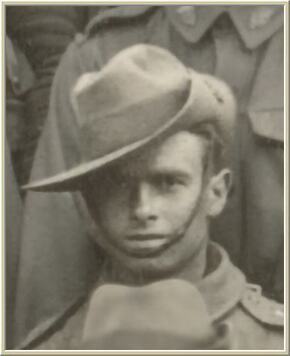
49940
PALMER, Claude Ernest Hamil
| Service Number: | 889 |
|---|---|
| Enlisted: | 31 August 1914 |
| Last Rank: | Private |
| Last Unit: | 10th Infantry Battalion |
| Born: | Port Pirie, South Australia, 14 December 1895 |
| Home Town: | Port Pirie, Port Pirie City and Dists, South Australia |
| Schooling: | Prince Alfred College, Kent Town, Adelaide. South Australia |
| Occupation: | Electrician |
| Died: | Heart Failure, Sarasota County, Florida U.S.A., 21 July 1983, aged 87 years |
| Cemetery: |
Privately Cremated Sarasota, Sarasota County, Florida, U.S.A. Plot: Columbarium #3 |
| Memorials: |
World War 1 Service
| 31 Aug 1914: | Enlisted AIF WW1, 889, 10th Infantry Battalion | |
|---|---|---|
| 20 Oct 1914: | Involvement Private, 889, 10th Infantry Battalion, --- :embarkation_roll: roll_number: '10' embarkation_place: Adelaide embarkation_ship: HMAT Ascanius embarkation_ship_number: A11 public_note: '' | |
| 20 Oct 1914: | Embarked Private, 889, 10th Infantry Battalion, HMAT Ascanius, Adelaide |
Letter from the Front
Claude Ernest Hamill Palmer was a 19 year old apprentice electrician residing on The Terrace in Port Pirie when he volunteered for the A.I.F. on the 31st August 1914. His previous military experience afforded him included 2 years in the Junior Cadets and 3 years training in the Quorn Light Horse (S.A.).
Private Palmer, Service Number 889, embarked overseas on the 20th November 1914 and was attached to the 10th Infantry Battalion landing on Gallipoli, Turkey 25th April 1915.
In a letter to his parents dated May 1st 1915 Private Claud Palmer writes:
"Here I am in Alexandria again after an absence of nine weeks. As you know our brigade left Egypt on March 1st and went to Lemar, a small island about 35 miles east of the Dardanelles, we were there for about eight or nine weeks just doing practically nothing. However, it was a relief after Cairo, although it was so quiet, no towns to go to or anything like that, and of course on leave except for a three-day bivouac, we slept on the boat every night.
At last they got things going and last Saturday afternoon we left Lemnos and sailed for the Gulf of Saros and the Dardanelles. We were taken off the ______ at 1.30 and put into a destroyer and made for our landing.
We arrived there at 4 a.m. and put off in the boats to land. We were in the second lot of boats, and just as the first lot were landing we were getting in our boats off the destroyer about 150 yards from the land. As the first boats grounded the Turks opened fire on us. Our chaps simply fixed bayonets and charged the hill where they were entrenched. They had a battery along the shore which, fired at our boats the whole time we were landing, and I tell you it was pretty warm work.
Well, we pushed them back about two miles and got a footing. The third brigade, 9th, 10th, 11th, and 12th battalions held them while the others landed. At about 10 a.m. they started a counter-attack, and they got a lot of us enfiladed with machine gun fire and shrapnel, and I tell you they gave us fits. Well, I was lying down, being shot at for about four hours, and at last I got it in my left first finger. I could not hold my rifle up so I bandaged it up and retired down to where the Red Cross were dressing.
Young Len Hoche was hit in the left side and I managed to half carry, half drag him down. Well, we got to the beach, with their snipers shooting at us the whole time, and, were put on the ______. I tried to get ashore when I knew they were going to Alexandria, but they would not let me go, and they put us on another boat here and we are going back tomorrow, I think."
A fortnight after writing this letter Private Palmer received a shrapnel wound to the right foot. Suffering influenza, dysentery and diarrhoea Claude returned to Australia medically unfit with Typhoid Fever on the 14th March 1916.
Submitted 11 April 2020 by Gary Fradd









